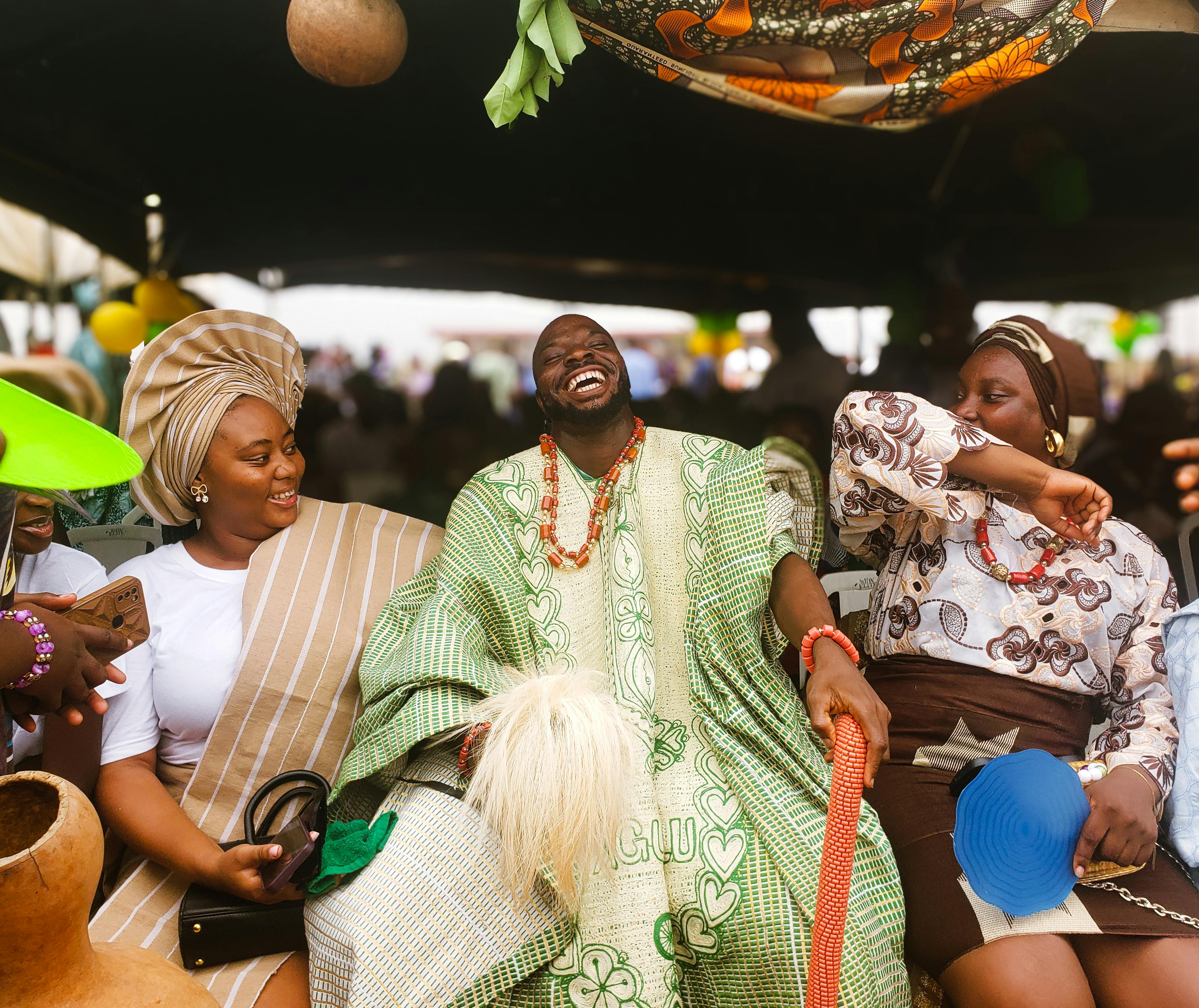African drama is as ancient as the civilizations of the world, and its origin runs deep in traditions, storytelling, and community performance. Before scripts and stages, drama dwelt in African villages and towns as a sacred expression—a blend of music, dance, storytelling, and mythic acts. With time, African drama developed from its sacred origins to a lively, advanced, and theatrical tradition. This change was influenced by colonial experiences, post-independence identity struggles, and modern exploration that shows the versatility of African cultures.
Today’s African theatre, whether written or performed, carries the resonance of ancient drums and ceremonial chants, yet speaks in the languages of resistance, revolution and renewal. Let’s explore how African drama journeyed from ritual to stage.
Ritual Origins: African Drama as Sacred and Communal Practice
Before it was referred to as “drama” by Westerners, African traditional practices and performances, consisting of their rituals, were integral to religion, governance, and social cohesion. These ritualistic performances constituted their “traditional dramas“, literally. Ritual performances celebrated births, initiations, harvests, and deaths. In these rituals, they acknowledged ancestors, cleansed communities, and sought divine guidance. These enactments were ritualistic, which involved costumes, chants, masks, drumming, dance, and symbolic signs.
In cultures such as the Yoruba of Nigeria, the Akan of Ghana, and the Zulu of South Africa, the ritual was not just a performance—it was real. The performers were not pretending; they were symbolizing gods, spirits, and ancestors. The barriers between the audience and the performer were usually fuzzy. Everyone had a role, whether as an observer, participant, or witness.
There was room for unscripted acts even though these acts observed firm traditional structures. They impacted moral values, affirmed community identity, and transferred cultural knowledge from generation to generation. “For a deeper understanding of the role of oral traditions in African literature, see Ruth Finnegan’s seminal work Oral Literature in Africa.”
Storytelling and Oral Theatre Traditions
Oral storytelling became the second pillar of African drama. Griots in West Africa, imbongis in Southern Africa, and other oral historians acted as both entertainers and custodians of ancestral knowledge. They used dramatic techniques—dialogue, mimicry, song, and gesture—to tell histories.
Colonial Contact and the Birth of Written Drama
The colonial period marked a vital change. European missionaries and colonial masters brought Western-style education and theatre. Mission schools introduced Shakespeare, Greek drama, and Christian morality plays. While often disrespectful to native renditions, these institutions accidentally educated a generation of African dramatists.
Early African dramatists began to adjust to Western theatrical forms but with clear African content and themes. Some African dramatists also reappropriated missionary forms to challenge colonialism. They wrote in English, French, or Portuguese—but their characters spoke with African idioms, dealt with colonial injustice, and referenced traditional values.
Hubert Ogunde (Nigeria) was a key early figure, blending music, humor, and social issues in Yoruba plays. Stephen Black and Ama Ata Aidoo also wrote culturally rooted dramas about colonialism, gender, and education.
This period saw the rise of written and printed African plays, while oral and ritual traditions continued. The hybrid use of colonial drama structures together with African cultural elements by African dramatists began the culture of reappropriating colonial materials, in this case drama, as a political tool of subversion.
Post-independence Theatre
After African countries gained independence in the 1950s and 60s, drama as a powerful political weapon continued. Playwrights used theatre to resist colonial ideas, explore African identity, and speak out against poor leadership. Wole Soyinka of Nigeria mixed Western styles with Yoruba traditions to expose social problems. In Kenya, Ngũgĩ wa Thiong’o used local languages and community actors to tell bold stories about land and injustice—leading to his arrest. Women like Ama Ata Aidoo and Penina Mlama also used theatre to fight for gender equality and social change.
Popular African Drama and Community Theatre Movements
In the 1970s to 1990s, African theatre moved beyond city stages and into everyday spaces. Inspired by Augusto Boal’s Theatre of the Oppressed, artists began using drama to educate and raise awareness in communities.
In places like Uganda, Zimbabwe, and South Africa, performers took their shows to markets, schools, and villages. These plays used humor, local languages, and audience participation to talk about issues like HIV/AIDS, domestic violence, and human rights.
Contemporary Trends: Digital, Diasporic, and Experimental African Drama
Today, African drama is growing in new and creative ways. Technology, migration, and urban life are changing how plays are made and shared. During COVID-19, digital theatre became popular, with plays streamed online and rehearsals performed virtually. African writers abroad, like Danai Gurira (Eclipsed), explore African identity through global stories on platforms like Broadway and Netflix. Local artists also keep experimenting and blending tradition with new styles. Festivals like the Lagos Theatre Festival (Nigeria), Ubumuntu (Rwanda), and the National Arts Festival (South Africa) showcase bold, multilingual, and experimental works. Modern African drama now includes many forms—feminist plays, documentary theatre, Afrofuturism, multilingual performances, environmental theatre, and fusion with visual art/film as growing trends, and more. But no matter how much it changes, it still draws strength from traditional roots.
Conclusion
From ancient rituals to online performances, African drama has come a long way. It started as a spiritual expression, then became a tool for protest, education, and art.
This journey isn’t about leaving tradition behind—it’s about building on it. As new voices join and old styles return, African theatre continues to grow—always rhythmic, reflective, and deeply connected to its people.
Continue exploring the rich genres of African literature.

